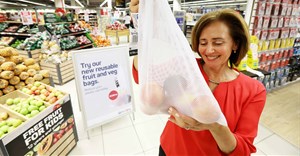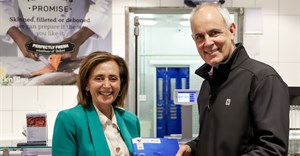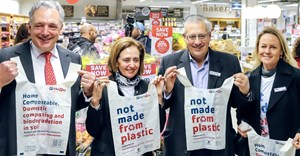
Subscribe & Follow
Jobs
- Support Centre Advisor George
- Sous Chef George
- Rental Agent George
- HR Administrator East Rand
- Mid-Level Software Tester Sandton
- Mid-Senior Full Stack C#/React Developer Sandton
- Junior Qlik Sense Developer Centurion
- Bookings Clerk Johannesburg North
- National HR and IR Manager East Rand
- Regional Sales Manager East Rand
Green Shack pilot project to offer safer housing and food security

Known as The Green Shack, this low-tech design can transform temporary shelters into flood-proof, shack fire-resistant homes that can also feed a family with fresh, organic food.
Lamb's company, Touching the Earth Lightly, has co-funded the piloting of The Green Shack, which relies on cheap, natural low-tech, innovative, simple design that can be replicated on a large scale. The design suggests that the government can address the need for informal housing and for food security in the same physical space.
Two sun-facing walls of the shack are wrapped with vertical organic vegetable gardens supplied by a slow-release, gravity-fed drip-irrigation system. These two walls act as a living food wall, a fire break and also as a temperature regulator. Rain water is captured off the roof and stored on site. The remaining two walls are made of a double layer of corrugated iron, forming a cavity wall filled with sandbags. A successful example of the Green Shack has been trialled in the Mshini Wami informal settlement in Cape Town and a replica was on display at the CTICC at the recent 2013 Design Indaba.
A practical and secure solution
"As a food retailer, the issue of food security is constantly top of mind for us, given the havoc that climate change has wreaked locally and on a global scale," said Suzanne Ackerman-Berman. "It doesn't only come down to the availability of food, but also accessibility to it; for example, people not being able to afford food or for some reason are unable to get to a retailer. The Green Shack offers a practical and secure solution - shack dwellers can grow their own organic vegetables and, thanks to the design, they can be kept securely when the occupants are away or asleep."
A simple four-wall, corrugated iron structure forms the basis of the Green Shack, but this is augmented by several innovative features. It is raised off the ground (using compacted aggregate) to prevent flooding and daylight is supplied by light bulbs made from upturned, recycled plastic bottles that are filled with water and which transmit light into the shack without the need for windows, which often offer an invitation to criminals.
It is hoped that The Green Shack pilot project will create opportunities for livelihoods and nutrition, while educating communities about sustainable living. "No one wants to live in shack and no one should," said Lamb. "But the reality is that millions of people do and they have been waiting for over a decade for formal housing. We want to change the space of 'waiting' into safer, more resilient spaces of living, until such a time that formal housing becomes available."













